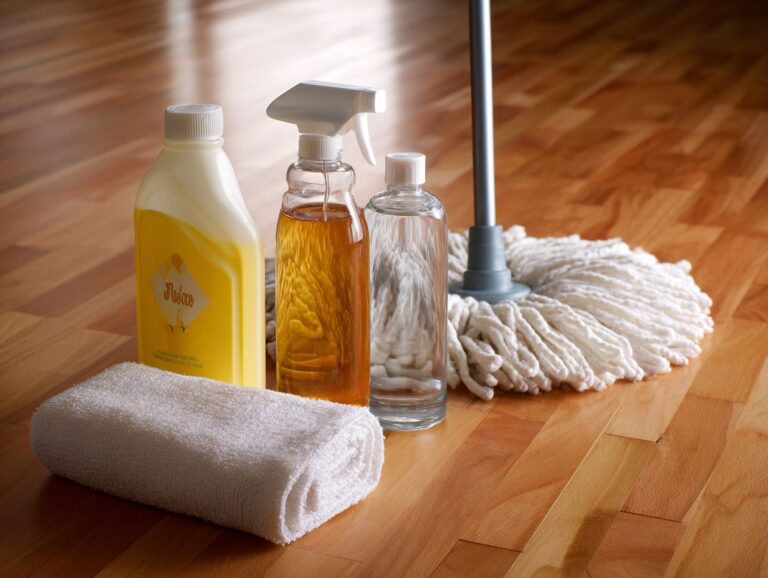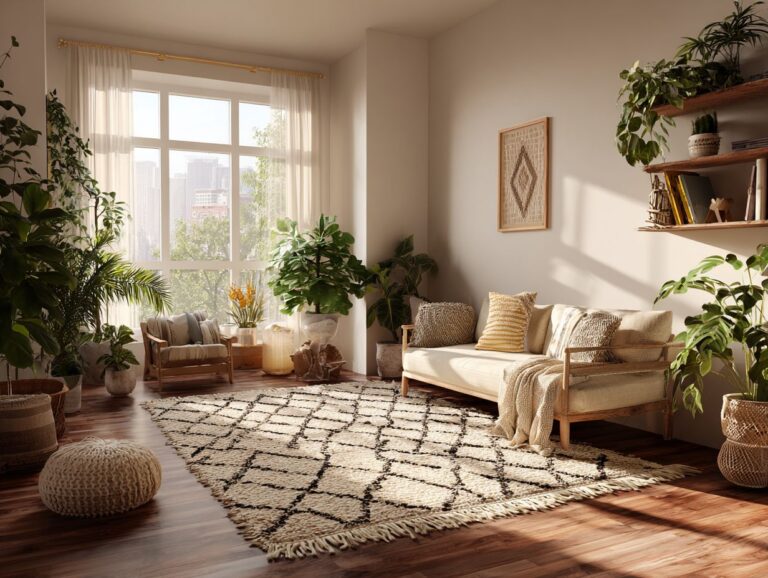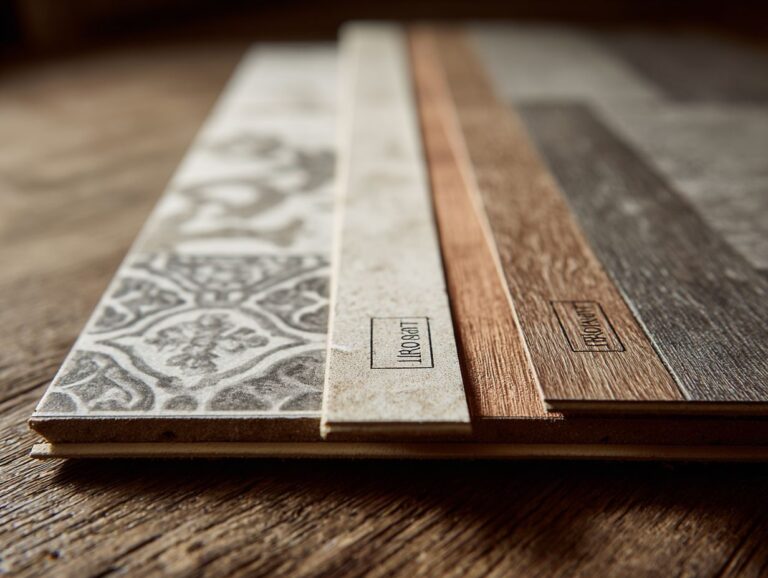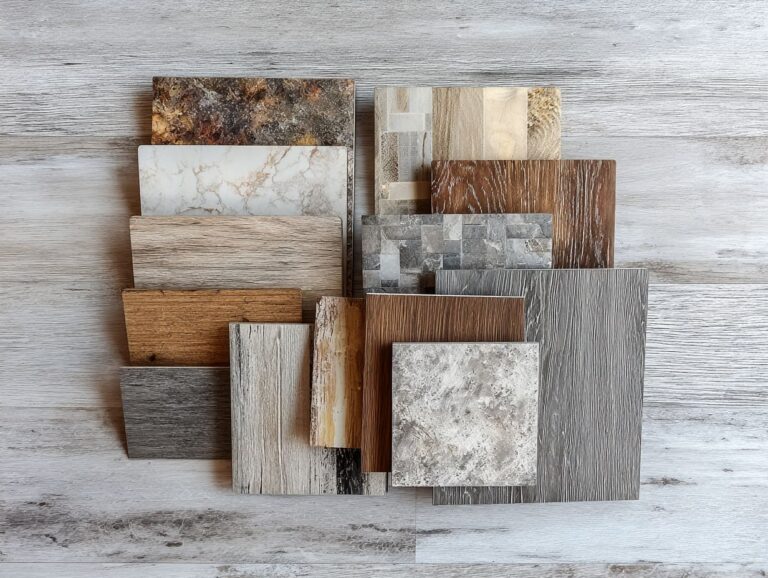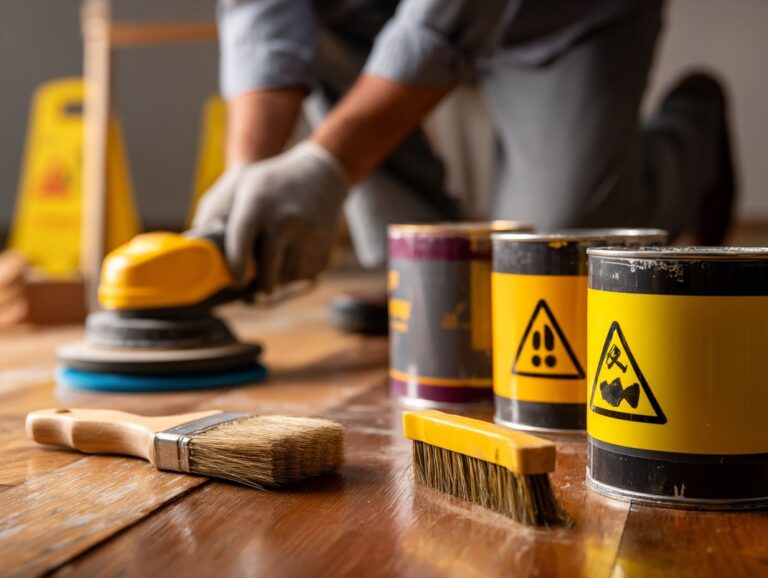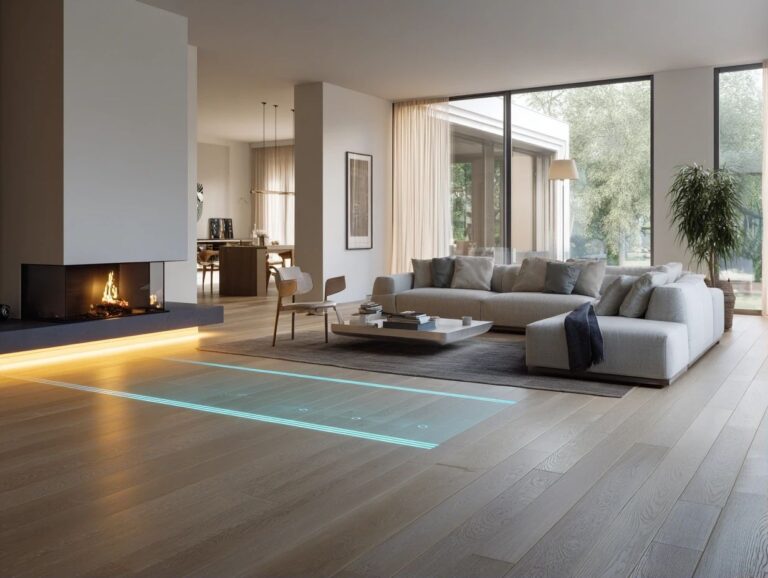Flooring ROI by Material – Which Adds Most Value
Choosing the right flooring can greatly increase your home’s value. Which materials will give you the best return on investment? Specialists such as Jacob Burdis, Richard Haddad, and Joseph Singsheim highlight that buyers prefer strong and attractive choices like hardwood flooring, which typically increases resale value more than other materials. This article examines how different flooring materials impact your return on investment, helping you make well-informed choices that draw in potential buyers.
Key Takeaways:
Contents
- Types of Flooring Materials
- Factors Influencing Flooring ROI
- Comparative Analysis of Flooring ROI
- Flooring Material ROI Statistics
- Case Studies and Real Estate Insights
- Frequently Asked Questions
- What types of flooring materials have the highest ROI?
- Is carpet a good flooring option for increasing home value?
- Are there any factors that affect the ROI of flooring materials?
- Does the type of flooring material affect the selling price of a home?
- Can the ROI of flooring materials vary depending on the room?
- Are there any flooring materials that are not recommended for increasing home value?
Understanding ROI in Home Improvements
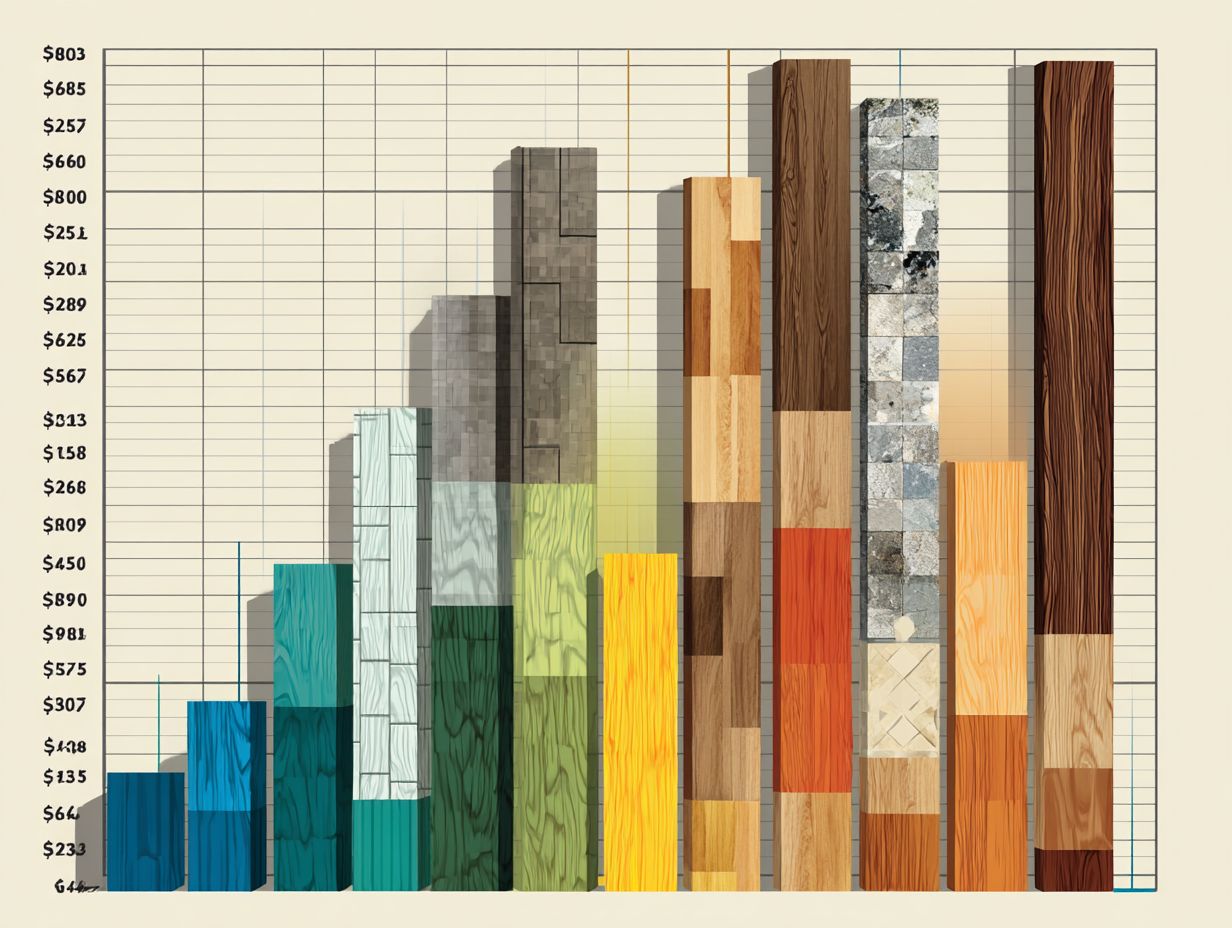
ROI in home improvements, particularly in flooring, can vary significantly; for instance, kitchen remodels typically see a 75% return while flooring renovations can achieve 100% or more based on material choice.
Selecting the right flooring can maximize your ROI.
Hardwood floors, for example, are durable and attractive to potential buyers, often resulting in a full return on investment. Luxury vinyl tile is becoming increasingly popular, often recovering around 80% of costs due to its versatility and aesthetic appeal.
Depending on your budget and target market, consider consulting a local realtor to identify which flooring options attract buyers in your area. This method helps you make informed decisions to raise your home’s value and appeal.
Importance of Flooring in Home Value
A good floor can make a home look better and greatly affect how buyers see it. The right flooring choice can increase the resale value by thousands.
According to the National Association of Realtors, homes with hardwood or high-quality tile flooring sell for an average of 2.5% more than those with carpet.
For instance, in Milwaukee, properties featuring engineered hardwood saw resale values jump by as much as $15,000. Buyers often spend more money on appealing flooring choices such as bamboo or luxury vinyl because they are both long-lasting and fashionable.
Using quality materials improves the look and helps the property stand out in the market.
Types of Flooring Materials
Looking into different flooring options is important for homeowners who care about both looks and practicality, as each type offers its own advantages and price points. For an extensive analysis of budgeting for such projects, our flooring budget calculator explains how much to plan for.
Hardwood Flooring
Hardwood flooring is popular among buyers, offering a typical return of 147%, which makes it a good investment for homeowners.
Hardwood flooring looks nice with its natural appearance and lasts a long time due to its strength.
Installation costs typically range from $8 to $15 per square foot, depending on the wood species and complexity of the job.
Hardwood floors can be refinished multiple times, allowing you to restore their original luster without the need for complete replacement.
This helps your flooring last longer and keeps its worth, making it a wise option for use now and for selling later.
Laminate Flooring
Laminate flooring offers a cost-effective alternative with an ROI of around 118%, appealing to budget-conscious homeowners without sacrificing style.
One of the standout benefits of laminate is its ease of installation; many homeowners choose to install it themselves, avoiding labor costs. If you’re considering tackling the project, you might find our DIY vs Professional Flooring Installation – Cost Analysis invaluable.
Laminate flooring comes in a wide variety of designs, mimicking materials like hardwood or stone, allowing you to choose the perfect aesthetic for your space.
Maintenance costs are generally low, usually ranging from $3 to $7 per square foot, making it a practical option for busy areas. Its durability and resistance to scratches make it ideal for homes with pets and children.
Tile Flooring
Tile flooring is well-known for being strong and resistant to water, which makes it a great choice for places like kitchens and bathrooms. It can also increase the resale value of a home.
When choosing tile flooring, consider ceramic and porcelain options.
Ceramic tiles usually cost $5-$10 per square foot. They come in various styles, making them a suitable option for walls and decoration. In comparison, porcelain tiles, costing $10-$15 per square foot, offer superior density and water resistance-ideal for high-traffic areas.
Changing grout colors or adding inlays can make both options look better and often raise a home’s resale value by 5-10%.
Carpet Flooring
Carpet flooring may not last as long as hard surfaces, but it feels soft and warm, which is why many people choose it for bedrooms and living rooms.
When considering carpet installation, budget around $2 to $5 per square foot, depending on material quality and style.
Looking after your carpet matters. Clean it regularly with a vacuum and get a professional cleaner once a year or so to maintain its appearance.
Picking the right color and texture can improve your home’s look, making it appealing to potential buyers.
Neutral colors like beige or gray are popular because they work well with various decorations and can make a home seem more appealing to buyers.
Vinyl Flooring
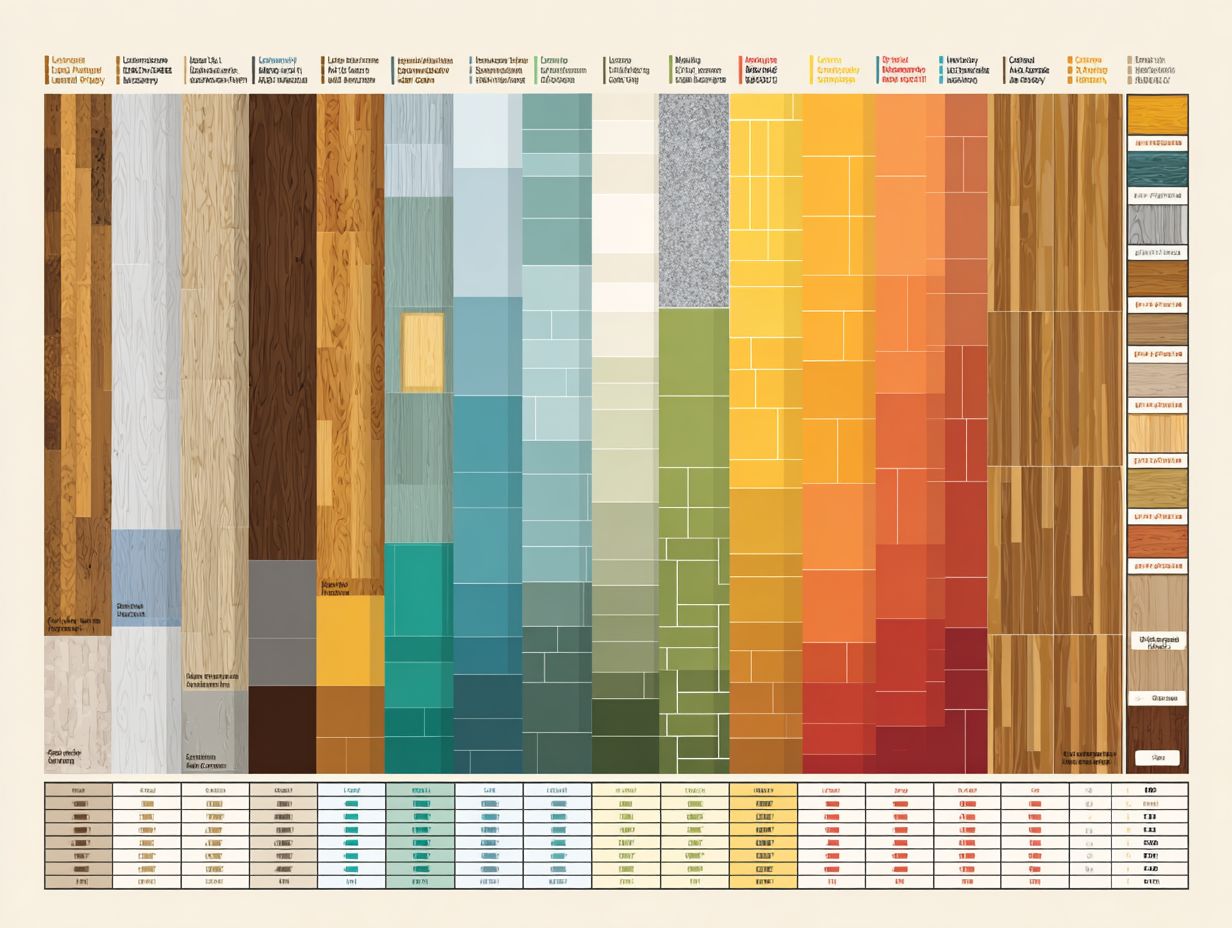
Luxury vinyl flooring has grown in popularity due to its affordability, ease of installation, and a potential ROI of 100%, matching the aesthetic of higher-end materials.
With a price range of $2 to $7 per square foot, luxury vinyl is an attractive option for both homeowners and property investors.
Its moisture resistance makes it suitable for kitchens and bathrooms, where traditional hardwood may falter. Modern designs often mimic the look of wood, stone, or tile, appealing to style-conscious buyers.
Current trends show an increasing demand for sustainable flooring solutions, and many luxury vinyl products are made from recycled materials, enhancing their market appeal.
Bamboo Flooring
Bamboo flooring is praised for its eco-friendliness and aesthetic flexibility, standing as an attractive option for environmentally conscious buyers and boasting an ROI that competes with traditional wood.
The installation cost for bamboo flooring typically ranges from $5 to $10 per square foot. This pricing becomes more attractive as more consumers look for eco-friendly materials.
Market trends reveal a growing demand for eco-friendly products, with bamboo expected to occupy a significant share of the flooring market by 2025.
To maximize value, consider pairing bamboo floors with energy-efficient underlayment and eco-friendly adhesives, ensuring both sustainability and performance in your home.
Factors Influencing Flooring ROI
Many things can affect the return on investment for flooring options, such as market trends, costs of installation, and how long the materials last. For an insightful comparison between different materials, check out our Luxury Vinyl Plank vs Tile Guide.
Market Trends and Buyer Preferences
Staying updated on market trends is essential, as buyer preferences shift towards eco-friendly options and low-maintenance materials, influencing flooring ROI.
Recent data from HomeLight and the National Association of Realtors indicates that sustainable materials like bamboo and cork are gaining traction for their renewability and durability.
For instance, cork flooring, which is naturally resistant to mold and mildew, appeals to health-conscious buyers. Luxury vinyl planks, known for their aesthetic versatility and low maintenance, are increasingly preferred due to their resilience against wear and water damage.
By using these materials in your property, you can make it more attractive to buyers and possibly raise its sale price.
Installation Costs and Labor
Installation costs for flooring can vary widely, averaging between $2 to $15 per square foot depending on the material and labor rates in your region.
Laminate flooring typically costs between $2 and $8 per square foot, offering a budget-friendly choice, while hardwood ranges from $5 to $15 per square foot, known for its durability and appealing appearance.
Although the upfront costs for hardwood are higher, its longevity and potential increase in home value can justify the investment. Vinyl options, priced around $3-$7 per square foot, offer a waterproof solution ideal for areas like kitchens and bathrooms.
Evaluating your specific needs and long-term goals will guide your decision.
Durability and Maintenance
Durability and maintenance are important for flooring return on investment; for example, hardwood can last more than 30 years if well-maintained, increasing its long-term worth.
In contrast, laminate flooring typically lasts around 15-25 years, depending on quality and maintenance practices.
While installation costs for hardwood are generally higher, averaging $8-$12 per square foot, its lifespan leads to lower long-term costs compared to laminate, which ranges from $1-$5 per square foot but may require replacement sooner.
Using protective coatings on hardwood can make it last longer and increase its resale value, leading to better returns on investment.
Therefore, evaluate your budget and lifestyle needs to choose the right flooring type.
Energy Efficiency
Flooring can contribute to a home’s energy efficiency; for instance, properly insulated flooring can reduce heating costs, indirectly increasing ROI.
Selecting the proper flooring material is important for saving energy. For instance, cork and bamboo are both excellent options; they offer natural insulation and can keep your home warmer in winter, reducing heating costs.
Moisture-resistant options like luxury vinyl can prevent mold growth, which is essential in humid climates. By selecting flooring that minimizes heat loss and moisture issues, homeowners can save on utility bills long-term.
Consider consulting a local contractor to evaluate your options based on climate and home design, ensuring you make a suitable choice for your environment.
Comparative Analysis of Flooring ROI
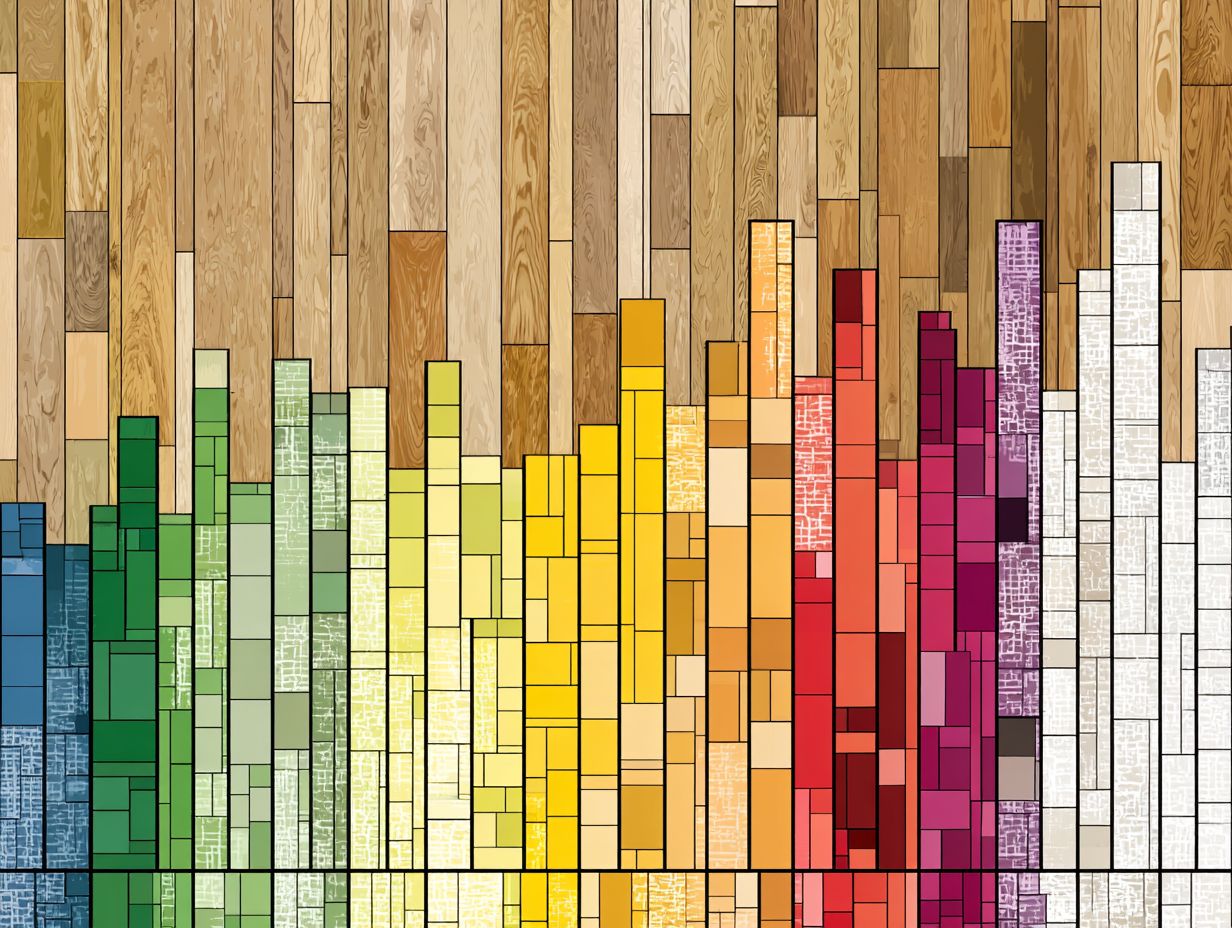
Examining various flooring options can reveal their impact on financial gains, which is important for making informed investment decisions.
Flooring Material ROI Statistics
Flooring Material ROI Statistics
The Flooring Material ROI Statistics offers a useful system to analyze the financial benefits related to different types of flooring materials. Although the data set does not provide exact numbers or types, we can examine the usual factors that often influence ROI in flooring materials.
Return on Investment (ROI) The choice of flooring materials depends on several important factors:
- Initial Cost: The upfront expenditure required to purchase and install flooring materials can vary significantly. For example, materials like hardwood or natural stone are often more expensive initially compared to laminate or vinyl.
- Durability and Lifespan: Materials with longer lifespans and higher durability-such as ceramic tiles or high-quality hardwood-typically offer better ROI as they require less frequent replacement or repair.
- Maintenance Costs: The ongoing maintenance costs associated with flooring can impact ROI. Some materials, such as carpet, may require regular cleaning and more intensive care, while others like laminate are relatively low-maintenance.
- Impact on Property Value: Flooring choices can significantly affect property value. Good flooring can make a home more appealing to buyers and increase its selling price, which can improve return on investment.
- Energy Efficiency: Certain flooring materials can contribute to a building’s energy efficiency. For example, carpets can provide insulation, potentially lowering heating costs.
Strategic Selection of Flooring Materials involves balancing these factors to maximize ROI. By considering initial costs, durability, maintenance, and impact on property value, investors and homeowners can make informed decisions that align with their financial objectives and lifestyle preferences.
Even without exact numbers, knowing common elements that impact ROI can help people make smart flooring decisions that fit their budget and boost the property’s value.
Hardwood vs. Laminate
While hardwood offers a higher ROI (around 147%), laminate provides a budget-friendly option with an ROI of 118%, appealing to different buyer demographics.
In a comparison of durability, hardwood typically lasts 25+ years with proper care, while laminate may endure 15-25 years, depending on quality.
Hardwood has a classic appearance that often appeals to buyers wanting a high-end feel. Laminate offers many designs that look like wood, giving it the impression of flexibility, though it does not have the same genuine quality.
Pricing also differs; hardwood can range from $5 to $15 per square foot, while laminate generally falls between $1 to $3 per square foot, highlighting a significant cost-saving opportunity for budget-conscious homeowners.
Tile vs. Vinyl
Tile and vinyl flooring both offer distinctive benefits; tile is favored for its durability and aesthetics, while vinyl excels in cost-effectiveness and ease of installation.
When looking at these choices, think about a few things:
- ROI: For tile can be high due to its longevity, often lasting over 20 years, while vinyl generally lasts 10-15 years.
- Installation costs: Tile tends to be higher ($5-$15 per square foot) compared to vinyl ($1-$3), which greatly affects budget decisions.
- Design versatility: Tile offers a wealth of styles and finishes, whereas vinyl provides a variety of looks at lower prices.
- Maintenance: Tile requires occasional sealing, while vinyl just needs regular cleaning to look fresh.
Carpet vs. Hard Surface Flooring
Carpet can provide comfort but typically has a lower resale value compared to hard surface flooring options, which often yield higher ROIs.
Hard surface flooring, such as hardwood or tile, generally appeals more to homebuyers and can increase property value. For instance, hardwood floors can fetch a return on investment (ROI) of approximately 70%, while high-end tiles may reach up to 75%.
In contrast, carpet often requires more maintenance and replacement, leading to additional costs over time. Hard surfaces are easy to clean and resist stains, making them a sensible choice for high-traffic areas.
Finally, think about trends in your area; some places may still prefer carpet because it is warm and comfortable.
Case Studies and Real Estate Insights
Looking at real-life examples shows how flooring decisions have affected home sales and return on investment in different markets. This is especially relevant when considering whether to refinish or replace flooring, as understanding market trends can help maximize your property’s value.
Regional Variations in ROI
Regional variations can significantly impact flooring ROI; for example, hardwood is more sought after in colder climates, while tile is favored in warmer areas.
According to the 2022 Remodeling Impact Report, homeowners in the Northeast see an average return on investment of 75% for hardwood floors, attributed to their aesthetic appeal and insulation properties.
Conversely, in the Southwest, tile flooring offers a 70% ROI, as it remains cool underfoot, ideal for hotter temperatures. Luxury vinyl planks have gained traction across various regions, showing a consistent 68% ROI, appealing for their affordability and resilience.
To get the most benefit, it is necessary to study local tastes and weather conditions when choosing flooring.
Impact of Flooring on Home Sales
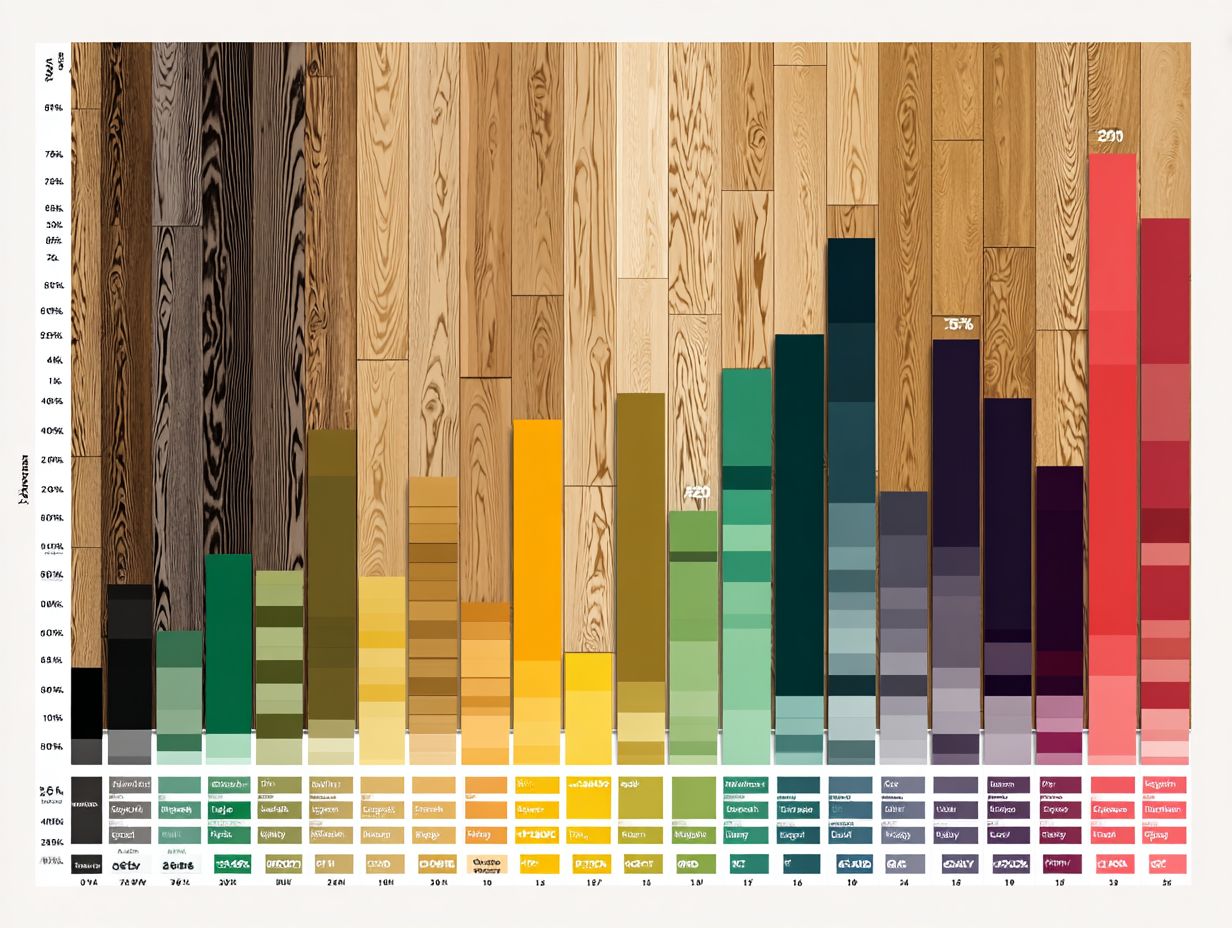
Research shows that quality flooring can accelerate home sales; homes with upgraded flooring sell 10-15% faster than those with outdated options.
For sellers, investing in popular flooring choices can yield a significant return. Hardwood floors, usually priced between $5-$10 per square foot, are very popular and can increase a home’s worth.
In contrast, homes with worn carpet may linger on the market longer and attract lower offers. Checking ideas from Houzz or Pinterest can guide sellers to pick popular materials that attract buyers, helping their property get noticed.
Updating the flooring can make a property listing more appealing to buyers and help it sell more quickly.
Final Recommendations for Homeowners
Homeowners are advised to weigh the costs and benefits of flooring materials carefully, considering both aesthetic appeal and potential ROI in their investment decisions.
Hardwood flooring costs about $8-$12 per square foot. It can increase home value and appeal to buyers.
Conversely, luxury vinyl planks, costing about $2-$5 per square foot, offer a cost-effective alternative that mimics wood or stone looks without sacrificing durability.
Carpeting, priced around $3-$6 per square foot, generally has a lower ROI but is favored for comfort in bedrooms.
At the end, check your budget and upcoming plans to choose the right flooring for your home.
Future Trends in Flooring Materials
Emerging trends indicate a growing preference for sustainable and low-maintenance flooring options, expected to dominate the market by 2025.
This shift is largely driven by consumer awareness regarding environmental impact and advances in materials technology.
For instance, bamboo and cork are gaining popularity due to their renewability and natural aesthetic. Luxury vinyl tile (LVT) is favored for its durability and ease of installation, often outperforming traditional hardwood options.
Homeowners are also increasingly drawn to finishes that require minimal upkeep, such as ceramic or porcelain tiles, which resist stains and scratches.
Monitoring these materials can help manufacturers and retailers respond to changing market needs.
Frequently Asked Questions
What types of flooring materials have the highest ROI?
According to studies, hardwood, laminate, and tile flooring tend to have the highest ROI and add the most value to a home.
Is carpet a good flooring option for increasing home value?
In general, carpet does not have a high ROI compared to other flooring materials. However, if it is kept in good condition and made from quality materials, it can still increase the worth of a home.
Are there any factors that affect the ROI of flooring materials?
Yes, many things can influence the return on investment for flooring materials, like where the home is, how the real estate market is doing, and how well the flooring is installed.
Does the type of flooring material affect the selling price of a home?
Yes, the type of flooring material can greatly impact the selling price of a home. Homes with high-quality flooring materials tend to have a higher value and can attract more potential buyers.
Can the ROI of flooring materials vary depending on the room?
Yes, the ROI of flooring materials can vary depending on the room. For example, hardwood flooring in the living room can have a higher ROI compared to carpet in a bedroom.
Are there any flooring materials that are not recommended for increasing home value?
While all flooring materials can add value to a home, some may have a lower ROI compared to others. It is best to avoid cheap and outdated flooring options, as they may not appeal to potential buyers and could decrease the overall value of the home.
